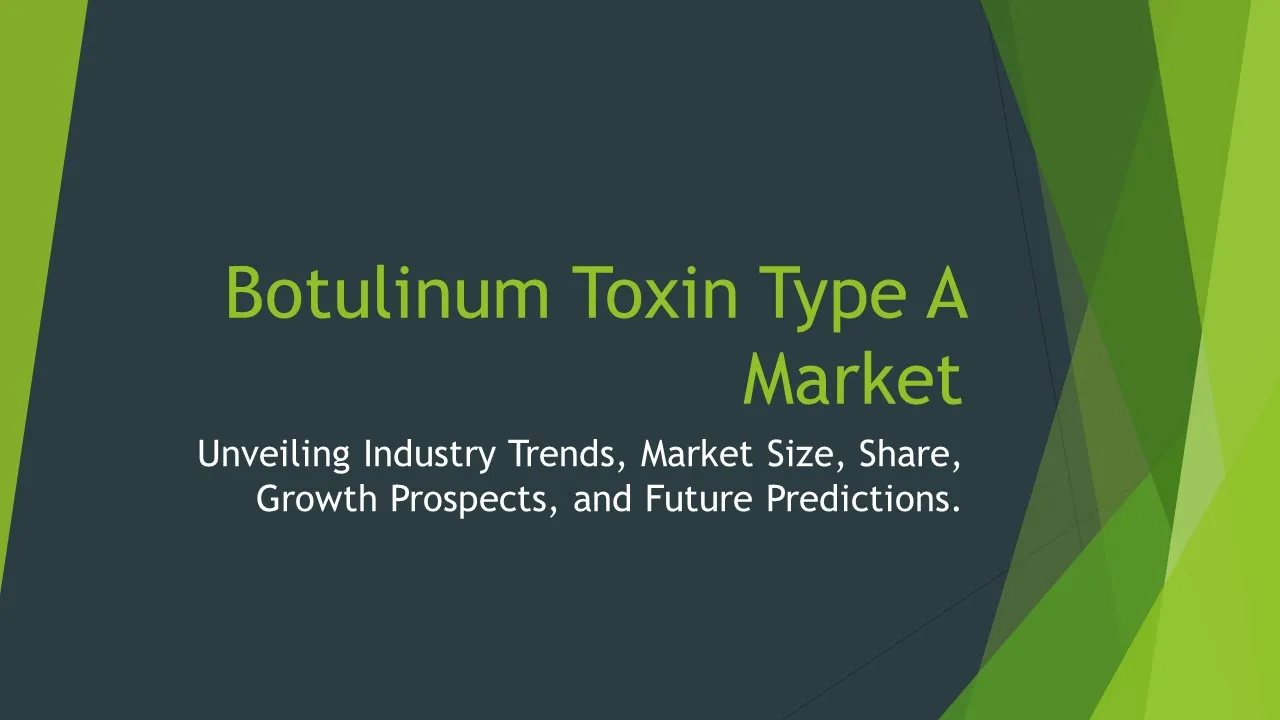Biological Seed Treatment
Biological Seed Treatment Market Segments - by Product Type (Biofungicides, Bioinsecticides, Bioherbicides, Bionematicides, Others), Application (Cereals & Grains, Oilseeds & Pulses, Fruits & Vegetables, Others), Distribution Channel (Direct Sales, Indirect Sales), Ingredient Type (Bacteria, Fungi, Botanicals, Others), and Region (North America, Europe, Asia Pacific, Latin America, Middle East & Africa) - Global Industry Analysis, Growth, Share, Size, Trends, and Forecast 2025-2035
- Report Preview
- Table Of Content
- Segments
- Methodology
Biological Seed Treatment Market Outlook
The global biological seed treatment market is projected to reach approximately USD 4.5 billion by 2035, growing at a CAGR of 12.2% between 2025 and 2035. This growth can be attributed to an increasing awareness of sustainable agricultural practices, which demand eco-friendly solutions to enhance crop yield while minimizing the use of synthetic chemicals. Additionally, the rising demand for organic farming and the need to address pest resistance in crops are significant factors driving this market. Moreover, advancements in biotechnology and the increasing adoption of precision agriculture techniques are further propelling the growth of the biological seed treatment market. The emphasis on integrated pest management (IPM) strategies is also expected to stimulate market expansion as farmers seek effective yet sustainable pest control solutions.
Growth Factor of the Market
The growth of the biological seed treatment market is significantly influenced by the increasing global population, which demands higher food production levels. As conventional agricultural practices face scrutiny due to their environmental impact, the shift towards biological alternatives becomes imperative. Furthermore, regulatory bodies worldwide are imposing stricter regulations on the use of chemical pesticides, thereby encouraging farmers to adopt biological seed treatments that are less harmful to human health and the environment. The growing trend of sustainable farming practices is also a vital factor, as it incentivizes the use of natural products that promote soil health and biodiversity. Additionally, the increasing research and development activities focusing on innovative biological agents are expected to enhance the effectiveness of these treatments, making them more appealing to farmers. With the rise of e-commerce platforms, the accessibility of biological seed treatment products has increased, allowing more farmers to utilize these sustainable options in their agricultural practices.
Key Highlights of the Market
- The market is expected to reach USD 4.5 billion by 2035, with a CAGR of 12.2%.
- Rising demand for organic farming practices drives market growth.
- Government regulations favoring sustainable agricultural practices boost market demand.
- Increased adoption of precision agriculture techniques enhances market prospects.
- Strong focus on integrated pest management systems supports the market's expansion.
By Product Type
Biofungicides:
Biofungicides play a crucial role in the biological seed treatment market, as they are designed to control fungal diseases that affect crop yield. These products utilize microorganisms such as bacteria and fungi to suppress plant pathogens, providing an effective alternative to chemical fungicides. The demand for biofungicides is driven by the increasing prevalence of fungal infections in crops, which can severely impact agricultural productivity. Their efficacy and safety make them favorable among farmers, particularly as they align with the growing trend toward sustainable agriculture. Moreover, advancements in microbial technologies are leading to the development of more potent biofungicides that can provide longer-lasting protection, thus enhancing their adoption across various agricultural sectors.
Bioinsecticides:
Bioinsecticides, derived from natural organisms, serve as an effective means for controlling insect pests. Their market presence is significantly bolstered by the rising concerns over the adverse effects of synthetic insecticides on human health and the environment. Bioinsecticides offer targeted pest management solutions while minimizing harm to beneficial insects and pollinators. Farmers are increasingly turning to bioinsecticides due to their compatibility with integrated pest management strategies. The ongoing research into novel bioinsecticides is also expanding their application range, making them more appealing in the fight against resistant insect populations. As consumers demand safer food products, the biopesticide market experiences continued growth, positioning bioinsecticides as a central component of sustainable agriculture.
Bioherbicides:
Bioherbicides are gaining traction as a viable alternative to chemical herbicides for weed management. These products utilize naturally occurring organisms or compounds to inhibit weed growth while being less harmful to the environment. The increasing adoption of bioherbicides is largely driven by the need for sustainable weed management practices, especially in organic farming. With the heightened awareness of chemical residues in food and their impact on health, farmers are seeking more natural solutions to maintain crop health. Bioherbicides not only manage weeds effectively but also promote soil health and biodiversity by reducing chemical inputs. As research progresses, the efficiency and formulation of bioherbicides are expected to improve, leading to their broader acceptance in various agricultural practices.
Bionematicides:
Bionematicides serve as an essential tool for combating nematode infestations in crops, which can lead to significant yield losses. These biological treatments utilize beneficial microorganisms to target nematodes, providing an eco-friendly solution to a persistent agricultural problem. The increasing prevalence of nematode-related crop diseases, coupled with the ineffectiveness of traditional chemical nematicides, has resulted in a growing interest in bionematicides. Farmers are recognizing the benefits of bionematicides not only in terms of pest management but also in promoting healthier soil ecosystems. As the industry continues to innovate with new formulations and application methods, the demand for bionematicides is expected to rise, further supporting sustainable agricultural practices.
Others:
This category encompasses various biological seed treatment products that do not fall into the major classifications mentioned above. These may include various biostimulants, plant extracts, and other microbial-based solutions aimed at enhancing overall plant health and resilience. The market for these products is driven by the growing awareness of the benefits provided by biological treatments, which can improve seed germination, root development, and stress tolerance in crops. As research expands in this area, innovative solutions are being developed to cater to the specific needs of different crops and farming conditions. The diversity of products within this segment supports the broader trend of increasing adoption of sustainable farming practices and integrated pest management strategies.
By Application
Cereals & Grains:
The application of biological seed treatments in cereals and grains accounts for a significant share of the market, given the high demand for these staple crops globally. Biological treatments help in protecting seeds from pests and diseases, ensuring optimal germination and healthy growth. As consumers increasingly prefer sustainably grown grains, the adoption of biological treatments becomes more critical for farmers. Additionally, as the market for organic cereals grows, the need for eco-friendly pest control options intensifies, further driving the demand for biological seed treatments in this segment. The effectiveness of these treatments in improving yield and quality makes them a vital investment for farmers in the cereal and grain sector.
Oilseeds & Pulses:
Biological seed treatments significantly benefit oilseeds and pulses, which are integral to global food supply and nutritional needs. Seeds of crops like soybeans, sunflowers, and legumes are susceptible to various diseases and pests, making biological treatments a valuable solution for enhancing crop resilience. Farmers are increasingly recognizing the importance of maintaining soil health while managing pests, leading to the growing adoption of biological products. Moreover, with the rising interest in plant-based proteins and oils, ensuring healthy crop production through biological seed treatments is becoming ever more critical. The ability of these treatments to improve overall seed performance aligns with the increasing focus on sustainable agriculture, positioning this segment for long-term growth.
Fruits & Vegetables:
The fruits and vegetables segment is witnessing a remarkable rise in the use of biological seed treatments, driven by an increase in consumer demand for clean and safe produce. These products help protect against various pests and diseases that can adversely affect sensitive crops. The emphasis on organic farming practices is compelling more fruit and vegetable growers to adopt biological solutions that align with consumer preferences for sustainably grown produce. Furthermore, biological treatments contribute to enhanced plant health, yield quality, and resilience, addressing the challenges posed by climate change and pest resistance. As this segment continues to grow, the market for biological seed treatments is expected to see sustained expansion driven by the demand for healthier, more sustainably produced fruits and vegetables.
Others:
The 'Others' category includes a range of diverse applications for biological seed treatments beyond cereals, grains, oilseeds, and vegetables. This encompasses various niche crops, ornamental plants, and specialty products that may require specific biological solutions for pest and disease management. The versatility of biological seed treatments allows them to be applicable across various agricultural sectors, catering to the unique requirements of different crops. As farmers seek holistic approaches to crop management, the adoption of biological treatments in these areas is expected to grow. This diversity in application showcases the broad potential of biological seed treatments in contributing to sustainable agricultural practices across various crop types.
By Distribution Channel
Direct Sales:
Direct sales channels play a significant role in the distribution of biological seed treatment products, allowing manufacturers to connect directly with farmers. This approach helps build strong relationships and facilitates better customer service, enabling farmers to receive personalized recommendations based on their specific agricultural needs. Direct sales can also enhance product visibility and availability, contributing to increased adoption rates among farmers looking for effective biological solutions. As awareness of sustainable practices grows, more manufacturers are opting for direct sales to promote their products and educate customers about their benefits. This method allows for streamlined communication between producers and consumers, ultimately fostering a more transparent marketplace.
Indirect Sales:
Indirect sales channels encompass distribution through retailers, agricultural cooperatives, and various intermediaries. This method provides farmers with easier access to biological seed treatments, especially those in remote areas that may lack direct manufacturer contact. Indirect sales often leverage established networks and logistics systems, enhancing product reach and market penetration. These channels are crucial in promoting awareness about the benefits of biological seed treatments through farming communities, agricultural fairs, and extension programs. Additionally, partnerships with retailers and distributors can create promotional strategies that educate farmers about the advantages of adopting biological solutions, thereby driving market growth in this segment.
By Ingredient Type
Bacteria:
Bacterial-based biological seed treatments are a prominent segment within the market, leveraging the natural ability of specific bacteria to promote plant growth and suppress diseases. These microorganisms can enhance nutrient availability in the soil and compete with pathogens, providing an effective mechanism for protecting plants. The increasing understanding of soil microbiomes and their impact on crop health has led to a surge in the development and adoption of bacterial seed treatments. Farmers are turning to these solutions for their efficacy in enhancing seedling vigor, nutrient uptake, and overall plant resilience. The ongoing research and innovation in this area continue to broaden the application of bacterial treatments, making them essential in sustainable agriculture.
Fungi:
Fungal-based biological seed treatments are recognized for their ability to improve plant health and resistance against diseases. These products utilize beneficial fungi to form symbiotic relationships with plant roots, enhancing nutrient absorption and overall vigor. The growing awareness of the benefits of soil health and biodiversity drives the adoption of fungal treatments in agriculture. As farmers increasingly seek alternatives to chemical fertilizers and pesticides, fungal-based solutions are becoming preferred options for promoting healthy plants and higher yields. Moreover, the continued research into new fungal strains and their applications is expected to expand their efficacy and scope in various agricultural settings.
Botanicals:
Botanical-based biological seed treatments harness the power of natural plant extracts to manage pests and diseases effectively. These solutions are gaining traction due to their safety profile and minimal environmental impact compared to synthetic chemicals. The growing demand for organic produce has accelerated the adoption of botanical treatments in agricultural practices. Farmers appreciate the dual benefits of pest management and plant health promotion offered by these treatments. Additionally, advancements in extraction and formulation technologies are leading to the development of more potent botanical products, enhancing their appeal in the market. As consumers increasingly prioritize sustainable and chemical-free options, the demand for botanical seed treatments is poised for significant growth.
Others:
The 'Others' category of ingredient types includes various other natural and biological agents that contribute to seed treatment efficacy. These may encompass diverse formulations that combine multiple biological agents to enhance overall performance and resilience against pests and diseases. The versatility of these treatments allows them to be tailored to specific crop needs, thereby providing farmers with customized solutions for their agricultural challenges. As research progresses, innovative formulations are expected to emerge, catering to niche markets and specialized applications. The push towards sustainable farming practices continues to drive the development and adoption of these alternative ingredient types, further enriching the biological seed treatment market.
By Region
North America holds a significant share in the biological seed treatment market due to well-established agricultural practices and high adoption of sustainable farming techniques. The region is projected to witness a robust CAGR of around 14% from 2025 to 2035, driven by increasing consumer demand for organic and sustainably produced crops. The presence of major agricultural players and ongoing research initiatives within the region further bolster market growth. Additionally, stringent regulations on chemical pesticide usage create a favorable environment for biological seed treatment adoption, positioning North America as a crucial market for biological solutions.
Europe is another key player in the biological seed treatment market, characterized by stringent regulations regarding chemical inputs and a strong emphasis on sustainability. The region is expected to grow steadily, driven by both consumer preferences for organic products and substantial investments in research and innovation. Countries such as Germany, France, and the Netherlands are leading the charge in adopting biological treatments across various agricultural sectors. Additionally, the European Union's commitment to sustainable agricultural practices aligns with the growth of the biological seed treatment market, making it a vital region for future expansion.
Opportunities
The biological seed treatment market presents numerous opportunities driven by the growing global demand for sustainable agricultural practices. As farmers increasingly seek eco-friendly solutions to combat pests and diseases, the adoption of biological treatments will continue to rise. Additionally, the organic farming sector is experiencing rapid growth, further propelling the need for biological seed treatments that align with consumer preferences for chemical-free produce. Moreover, advancements in biotechnology and microbial research are leading to the development of more effective biological products, creating new avenues for market players to explore. The integration of digital agriculture and precision farming technologies also offers opportunities for optimizing the application of biological treatments, enhancing their effectiveness in crop management. As awareness of environmental challenges continues to grow, the shift towards sustainable farming practices will create a favorable landscape for the biological seed treatment market.
Emerging markets present a wealth of opportunities for biological seed treatment adoption, as countries in Asia, Africa, and Latin America experience increasing agricultural challenges. The need for effective pest control solutions in these regions is essential for improving food security and agricultural productivity. Additionally, the rise of smallholder farmers in developing regions, who are more inclined toward sustainable practices, opens up new channels for market growth. The collaboration between governments, NGOs, and private sectors to promote sustainable agriculture will further support the adoption of biological solutions. With the increasing focus on climate resilience in agriculture, the biological seed treatment market is well-positioned to capitalize on these opportunities and contribute to global food production.
Threats
Despite the promising growth prospects for the biological seed treatment market, several threats could potentially hinder its progress. The primary challenge arises from the competition posed by conventional chemical pesticides, which often offer immediate and highly effective pest control solutions. Many farmers remain hesitant to switch to biological alternatives due to concerns over their perceived efficacy and cost-effectiveness. Additionally, the lack of standardized regulations and guidelines for biological products can create confusion among consumers and hinder market growth. Moreover, the slow adoption rates among certain farming communities can restrict the penetration of biological seed treatments, particularly in regions with entrenched reliance on chemical inputs. Climate change and its associated effects, such as altered pest dynamics and extreme weather events, further complicate the situation, as they may influence the effectiveness of biological treatments. Consequently, overcoming these challenges is crucial for the long-term success of the biological seed treatment market.
Additionally, the market faces potential restrainers, such as limited awareness and education among farmers regarding the benefits and proper usage of biological seed treatments. Many farmers may lack access to information or resources, leading to underutilization of these products. This barrier can be further exacerbated by the complexity of integrating biological treatments into existing agricultural practices, as farmers may require additional training and support. The perceived higher costs associated with some biological solutions compared to traditional chemical alternatives can deter adoption, particularly among price-sensitive farmers. Market players must invest in educational initiatives and support programs to address these issues and promote the benefits of biological seed treatments effectively. Overall, recognizing and mitigating these threats and restrainers will be vital to fostering a favorable environment for the growth of the biological seed treatment market.
Competitor Outlook
- BASF SE
- Corteva Agriscience
- Syngenta AG
- FMC Corporation
- Novozymes A/S
- Valagro SpA
- BioWorks, Inc.
- AgriLife
- Certis USA LLC
- Plant Health Care plc
- Koppert Biological Systems
- Biobest Group NV
- Seipasa, S.L.
- Greenmax AgroTech Group
- AgroFresh Solutions, Inc.
The competitive landscape of the biological seed treatment market is characterized by a mix of established players and emerging companies striving to capitalize on the growing demand for sustainable agricultural solutions. Major multinational corporations, such as BASF SE and Corteva Agriscience, leverage their extensive research and development capabilities to innovate and expand their product portfolios. These companies invest significantly in developing advanced formulations and optimizing application techniques to enhance the effectiveness of their biological products. Additionally, partnerships and collaborations with research institutions and agricultural organizations are increasingly common, as these firms seek to harness cutting-edge technologies and address the evolving challenges faced by farmers.
Emerging companies are also making their mark in the biological seed treatment market by focusing on niche solutions and specialized products. These firms often adopt agile business models and leverage advancements in biotechnology to create innovative treatments tailored to specific crop needs or pest management challenges. Many of these companies prioritize sustainable practices and aim to educate farmers about the benefits of biological alternatives. The entry of these new players fosters healthy competition and contributes to the overall growth of the market, as they challenge established norms and push for greater adoption of biological seed treatments in agriculture.
Some key players in the biological seed treatment market include Syngenta AG, which has developed a comprehensive range of biological solutions aimed at enhancing crop health and yield. Their focus on integrating biological treatments within broader crop protection strategies has positioned them as a leader in the sector. BASF SE stands out for its commitment to innovation, investing heavily in research to develop new, sustainable biopesticides that cater to the needs of modern agriculture. Additionally, Novozymes A/S specializes in microbial solutions, offering a variety of products that promote soil health and improve crop resilience. The competitive dynamics within the biological seed treatment market are continuously evolving, with companies striving to stay ahead through innovation, sustainability, and a focus on meeting the needs of farmers around the world.
1 Appendix
- 1.1 List of Tables
- 1.2 List of Figures
2 Introduction
- 2.1 Market Definition
- 2.2 Scope of the Report
- 2.3 Study Assumptions
- 2.4 Base Currency & Forecast Periods
3 Market Dynamics
- 3.1 Market Growth Factors
- 3.2 Economic & Global Events
- 3.3 Innovation Trends
- 3.4 Supply Chain Analysis
4 Consumer Behavior
- 4.1 Market Trends
- 4.2 Pricing Analysis
- 4.3 Buyer Insights
5 Key Player Profiles
- 5.1 BASF SE
- 5.1.1 Business Overview
- 5.1.2 Products & Services
- 5.1.3 Financials
- 5.1.4 Recent Developments
- 5.1.5 SWOT Analysis
- 5.2 AgriLife
- 5.2.1 Business Overview
- 5.2.2 Products & Services
- 5.2.3 Financials
- 5.2.4 Recent Developments
- 5.2.5 SWOT Analysis
- 5.3 Syngenta AG
- 5.3.1 Business Overview
- 5.3.2 Products & Services
- 5.3.3 Financials
- 5.3.4 Recent Developments
- 5.3.5 SWOT Analysis
- 5.4 Valagro SpA
- 5.4.1 Business Overview
- 5.4.2 Products & Services
- 5.4.3 Financials
- 5.4.4 Recent Developments
- 5.4.5 SWOT Analysis
- 5.5 Novozymes A/S
- 5.5.1 Business Overview
- 5.5.2 Products & Services
- 5.5.3 Financials
- 5.5.4 Recent Developments
- 5.5.5 SWOT Analysis
- 5.6 Seipasa, S.L.
- 5.6.1 Business Overview
- 5.6.2 Products & Services
- 5.6.3 Financials
- 5.6.4 Recent Developments
- 5.6.5 SWOT Analysis
- 5.7 BioWorks, Inc.
- 5.7.1 Business Overview
- 5.7.2 Products & Services
- 5.7.3 Financials
- 5.7.4 Recent Developments
- 5.7.5 SWOT Analysis
- 5.8 Certis USA LLC
- 5.8.1 Business Overview
- 5.8.2 Products & Services
- 5.8.3 Financials
- 5.8.4 Recent Developments
- 5.8.5 SWOT Analysis
- 5.9 FMC Corporation
- 5.9.1 Business Overview
- 5.9.2 Products & Services
- 5.9.3 Financials
- 5.9.4 Recent Developments
- 5.9.5 SWOT Analysis
- 5.10 Biobest Group NV
- 5.10.1 Business Overview
- 5.10.2 Products & Services
- 5.10.3 Financials
- 5.10.4 Recent Developments
- 5.10.5 SWOT Analysis
- 5.11 Corteva Agriscience
- 5.11.1 Business Overview
- 5.11.2 Products & Services
- 5.11.3 Financials
- 5.11.4 Recent Developments
- 5.11.5 SWOT Analysis
- 5.12 Plant Health Care plc
- 5.12.1 Business Overview
- 5.12.2 Products & Services
- 5.12.3 Financials
- 5.12.4 Recent Developments
- 5.12.5 SWOT Analysis
- 5.13 Greenmax AgroTech Group
- 5.13.1 Business Overview
- 5.13.2 Products & Services
- 5.13.3 Financials
- 5.13.4 Recent Developments
- 5.13.5 SWOT Analysis
- 5.14 AgroFresh Solutions, Inc.
- 5.14.1 Business Overview
- 5.14.2 Products & Services
- 5.14.3 Financials
- 5.14.4 Recent Developments
- 5.14.5 SWOT Analysis
- 5.15 Koppert Biological Systems
- 5.15.1 Business Overview
- 5.15.2 Products & Services
- 5.15.3 Financials
- 5.15.4 Recent Developments
- 5.15.5 SWOT Analysis
- 5.1 BASF SE
6 Market Segmentation
- 6.1 Biological Seed Treatment Market, By Application
- 6.1.1 Cereals & Grains
- 6.1.2 Oilseeds & Pulses
- 6.1.3 Fruits & Vegetables
- 6.1.4 Others
- 6.2 Biological Seed Treatment Market, By Product Type
- 6.2.1 Biofungicides
- 6.2.2 Bioinsecticides
- 6.2.3 Bioherbicides
- 6.2.4 Bionematicides
- 6.2.5 Others
- 6.3 Biological Seed Treatment Market, By Ingredient Type
- 6.3.1 Bacteria
- 6.3.2 Fungi
- 6.3.3 Botanicals
- 6.3.4 Others
- 6.4 Biological Seed Treatment Market, By Distribution Channel
- 6.4.1 Direct Sales
- 6.4.2 Indirect Sales
- 6.1 Biological Seed Treatment Market, By Application
7 Competitive Analysis
- 7.1 Key Player Comparison
- 7.2 Market Share Analysis
- 7.3 Investment Trends
- 7.4 SWOT Analysis
8 Research Methodology
- 8.1 Analysis Design
- 8.2 Research Phases
- 8.3 Study Timeline
9 Future Market Outlook
- 9.1 Growth Forecast
- 9.2 Market Evolution
10 Geographical Overview
- 10.1 Europe - Market Analysis
- 10.1.1 By Country
- 10.1.1.1 UK
- 10.1.1.2 France
- 10.1.1.3 Germany
- 10.1.1.4 Spain
- 10.1.1.5 Italy
- 10.1.1 By Country
- 10.2 Asia Pacific - Market Analysis
- 10.2.1 By Country
- 10.2.1.1 India
- 10.2.1.2 China
- 10.2.1.3 Japan
- 10.2.1.4 South Korea
- 10.2.1 By Country
- 10.3 Latin America - Market Analysis
- 10.3.1 By Country
- 10.3.1.1 Brazil
- 10.3.1.2 Argentina
- 10.3.1.3 Mexico
- 10.3.1 By Country
- 10.4 North America - Market Analysis
- 10.4.1 By Country
- 10.4.1.1 USA
- 10.4.1.2 Canada
- 10.4.1 By Country
- 10.5 Middle East & Africa - Market Analysis
- 10.5.1 By Country
- 10.5.1.1 Middle East
- 10.5.1.2 Africa
- 10.5.1 By Country
- 10.6 Biological Seed Treatment Market by Region
- 10.1 Europe - Market Analysis
11 Global Economic Factors
- 11.1 Inflation Impact
- 11.2 Trade Policies
12 Technology & Innovation
- 12.1 Emerging Technologies
- 12.2 AI & Digital Trends
- 12.3 Patent Research
13 Investment & Market Growth
- 13.1 Funding Trends
- 13.2 Future Market Projections
14 Market Overview & Key Insights
- 14.1 Executive Summary
- 14.2 Key Trends
- 14.3 Market Challenges
- 14.4 Regulatory Landscape
Segments Analyzed in the Report
The global Biological Seed Treatment market is categorized based on
By Product Type
- Biofungicides
- Bioinsecticides
- Bioherbicides
- Bionematicides
- Others
By Application
- Cereals & Grains
- Oilseeds & Pulses
- Fruits & Vegetables
- Others
By Distribution Channel
- Direct Sales
- Indirect Sales
By Ingredient Type
- Bacteria
- Fungi
- Botanicals
- Others
By Region
- North America
- Europe
- Asia Pacific
- Latin America
- Middle East & Africa
Key Players
- BASF SE
- Corteva Agriscience
- Syngenta AG
- FMC Corporation
- Novozymes A/S
- Valagro SpA
- BioWorks, Inc.
- AgriLife
- Certis USA LLC
- Plant Health Care plc
- Koppert Biological Systems
- Biobest Group NV
- Seipasa, S.L.
- Greenmax AgroTech Group
- AgroFresh Solutions, Inc.
- Publish Date : Jan 20 ,2025
- Report ID : AG-633
- No. Of Pages : 100
- Format : |
- Ratings : 4.5 (110 Reviews)









